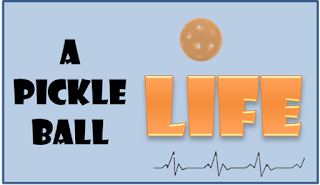Learn the basics first, then discover the subtleties...
I briefly mentioned yesterday that some principles get embedded into players' minds as they learn the game. Many times principles represent the safest action in a given situation. That does not mean that the principle represents the only option. My favorite contrarian, Mark Rennesson, discusses some mistakes that mid-level players make, including the exposure of some of the principles as myths, in his article 5 Intermediate Mistakes. An excerpt is shown below.
Pickleball is considered an 'open-skilled' sport because it requires wide-ranging and varied skills and the circumstances are always changing. The height, speed, spin, distance and direction a ball is hit is never quite the same as the ones before it. The fact that players are standing at (or moving through) different places on the court, that wind or sun conditions change throughout a game, means that pickleball is an activity full of variability and change.
That said, as someone who works with a lot of pickleball players, I can say that for all the variability in the sport, there are quite a few mistakes and habits that are common to intermediate players. Here are a few of them...
Many intermediate players return serve and move towards the net but don't actually get there by the time their opponents strike the ball. They are on their way to the non-volley zone but fail to reach it in time. While this isn't the end of the world, being several feet back of the line is problematic for two reasons: 1) you aren't as close to your opponents as you could be. That means when you hit, the ball has farther to travel and they will have more time to react; 2) by being back from the NVZ you make it less likely you'll get a high ball, and more likely it will be low. This makes you more susceptible to receiving one of those annoying balls at your feet.
Returning Serve to the Middle of the Court. I know. You've probably been told a million times that the centre of the court is exactly where you should be hitting your return. "Down the middle solves the riddle", right? While it does give you a significant margin for error and could cause confusion, I question whether you, as an intermediate player, really need a 20ft wide target. And even if you do manage to confuse your opponents, there is a good chance that if they do get fooled with a middle ball that they'll have a conversation about what to do next time you hit there. And I'm not sure that these two (marginal) benefits are worth the significant downside.
When you hit to the centre of the court you allow either player to hit the ball -- you give your opponents the choice of who plays that third shot. And who do you think will take it? The better player, of course! A better strategy is to aim the ball to the person you want to hit it. Whether it is a weaker player or one who has struggle recently, by aiming the ball away from the middle of the court, you take more control of the point.
See the rest of the article at Mark's website.




No comments:
Post a Comment